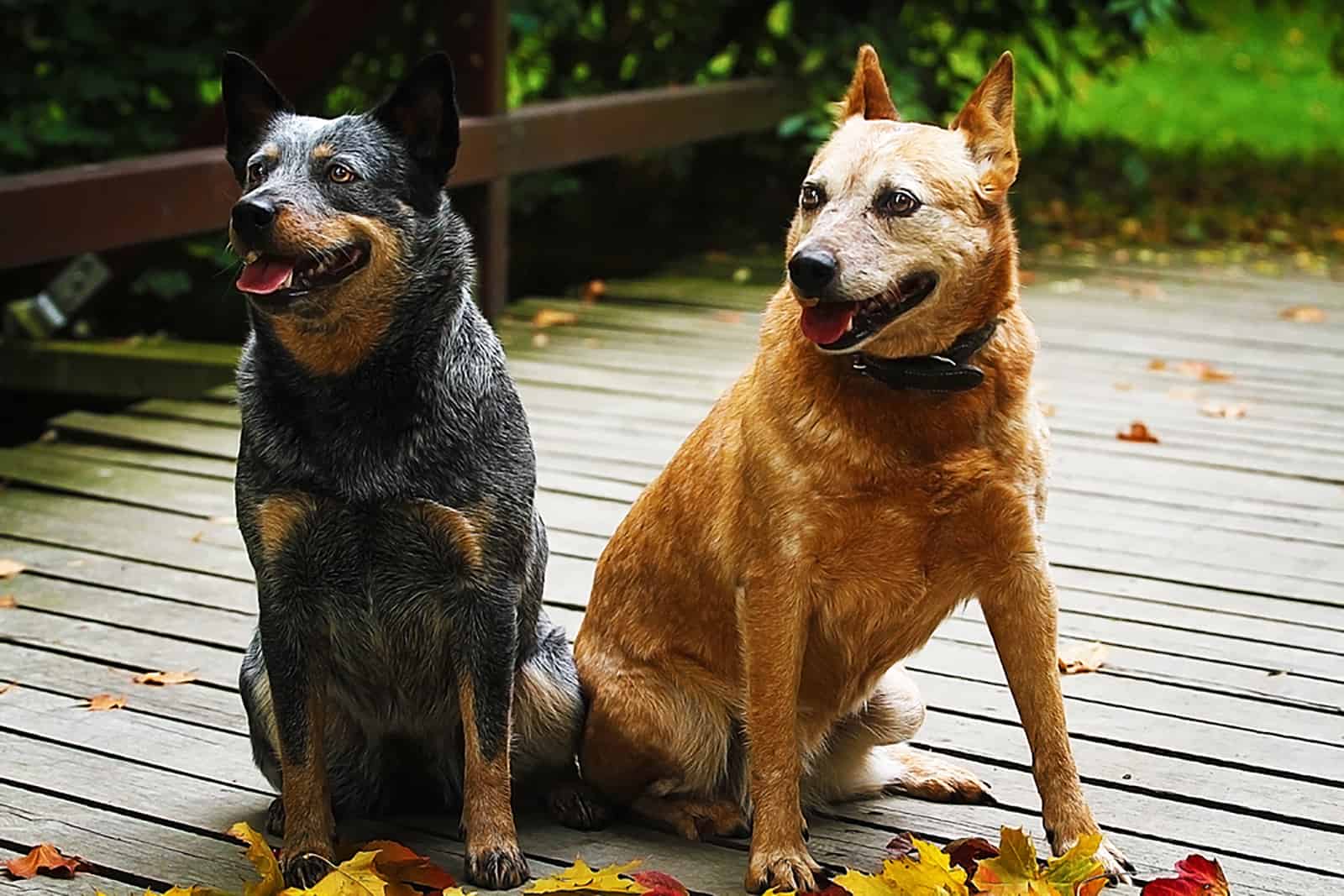Let me give you a straight-up answer — yes, the Red and Blue Heeler are the same dog breed. The official name of the dog breed is the Australian Cattle dog, and red and blue are different color shades within this dog breed.
Believe it or not, the ongoing Red Heeler vs Blue Heeler debate has been going on for over a century.
This article is a complete guide that compares the two major types of Australian herding dogs: the Red Heeler vs Blue Heeler.
Before we dive into this article, the main thing to note is that the Red and the Blue Heeler make the single dog breed. We are going to focus on both the similarities and differences between these two different colored herding dogs.
Sure, the main difference between the two is the coat color, but is that it?
Red Heeler vs Blue Heeler dog – which is the best breed of dog? Find out the differences between these two herding dogs and what you should know before buying one.
Red Heeler Vs Blue Heeler Comparison
Alright, let’s get right into this article that compares and contrasts the two most popular dog breeds in Australia — Red Heeler vs Blue Heeler.
Here is a quick chart that explains the key differences between the Red and the Blue Heeler.
[table id=552 /]
Keep in mind that choosing between the Red Heeler and the Blue Heeler will need more research than just a quick comparison chart!
What Are Some Similarities Between Red Heelers And Blue Heelers?
As we previously mentioned, Red and Blue Heeler dogs are alike in many ways. In fact, they are cousins, and their ancestries go back to the same dog breed.
The first thing that Red Heelers and Blue Heelers have in common is their name – they are called Australian Cattle dogs.
Both Heelers are incredible working dogs and their guarding skills go through the roof! When it comes to herding livestock, Red and Blue Heelers are outstanding drovers and are among the best cattle dog breeds.
Besides working at the ranch, Red Heelers and Blue Heelers are used for hunting, digging, and companionship!
Calling them herding, cattle, and working dogs may not be enough because Red Heelers and Blue Heelers are shepherd dogs that also serve as protective guard dogs.
What Is The Difference Between A Red Heeler And A Blue Heeler?
Red and Blue Heelers have similar body types and personalities, yet they are vastly different in appearance. In actuality, the only thing that makes these two different is the coat color, and that is about it.
But, since all dogs are different in terms of temperament, Red and Blue Heelers inherit different personalities.
Even though both are herding dogs that have several instincts built into them, the way they are brought up, socialized, and trained will have an effect on how they behave.
Heritage
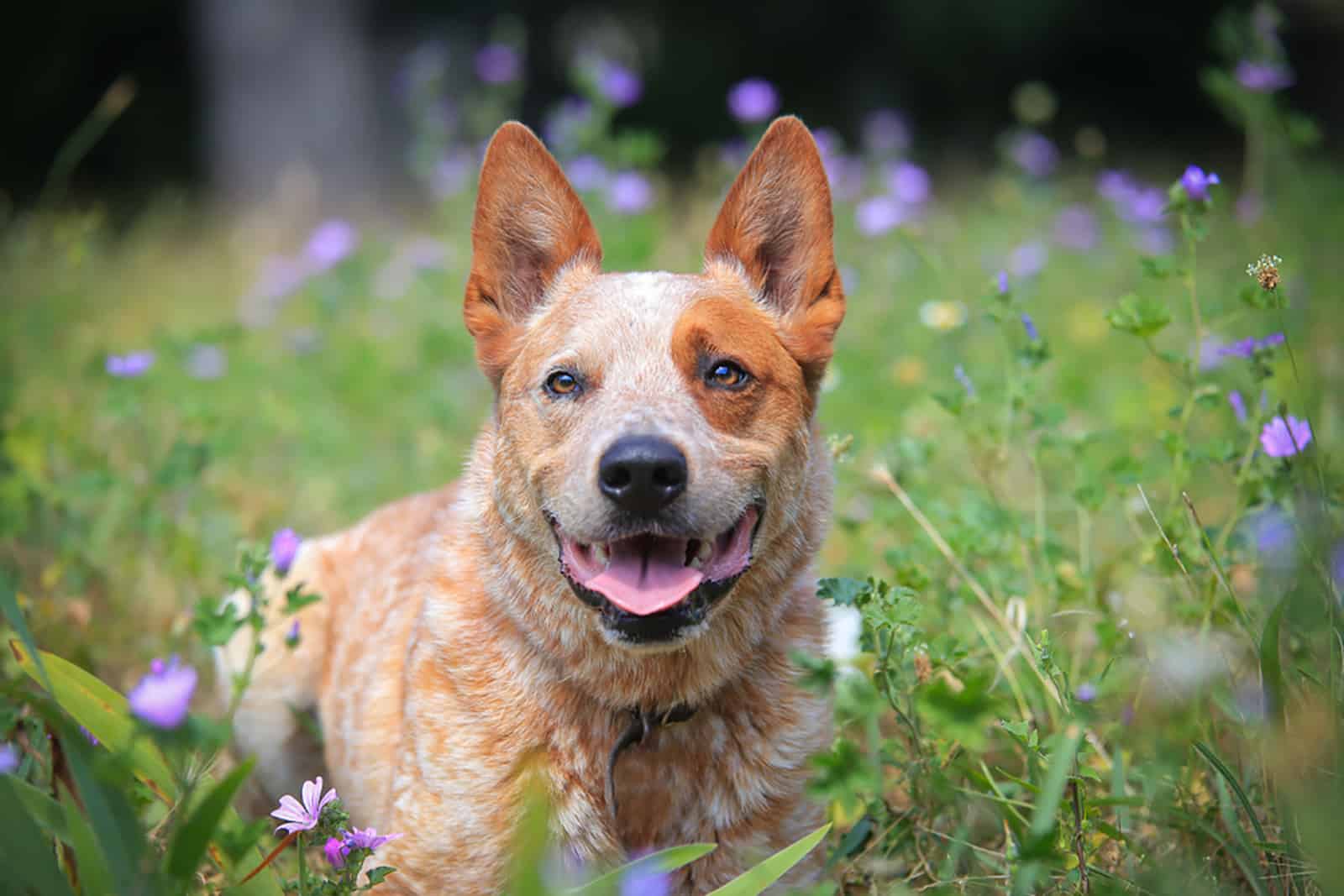
Let’s begin with the heritage of both herding pooches. Red and Blue Heelers are officially Australian dog breeds, but their origin is a bit different.
The Red Heeler was first to be developed and the Blue Heeler came about later. Both of these dogs were bred with the same breeding purpose — to herd livestock and protect households.
Both Heeler dogs became very popular in North America and they got the reputation of being the best family dogs in the whole U.S!
Red Heeler
The Red Heeler appeared in Australia back in the year 1840. The Red Heeler dog is believed to originate from Queensland, Australia, which is why it was often called the “Queensland Heeler”.
When you look at the Red Heeler’s body, it is safe to say that ranchers wanted an athletic dog with a short coat that can endure the Australian heat — and that’s exactly what they got!
Nowadays, Red Heelers are not as popular as Blue Heelers, but they are equally good doggos!
Blue Heeler
https://www.youtube.com/watch?v=IMMzUk8at_w
In contrast to the Red Heeler, the Blue Heeler was imported from England to Australia a few years later.
Its breeding purpose was to herd livestock and believe me, the Blue Heeler succeeded in every task that was given to it!
The Australian Cattle dog breed’s history may be a bit confusing because there are several different dog breeds that were initially crossed. Firstly, the Smithfield dog is thought to have been bred with dingos (wild dogs).
The offspring was later bred with purebred Collie to achieve the Australian Cattle dog breed.
Even though Robert Kaleski’s notes on Blue Heelers being a mix of Collie dogs and dingos, recent research shows that there is no Collie in the Australian Cattle dog breed.
Is There A Difference Between Australian Cattle Dog And Blue Heeler?
The Australian Cattle dog (ACD) is an official name of the Red/Blue Heeler dog. Therefore, the only difference is in the name.
Besides the name “Queensland Heeler”, the Blue Heeler is often called the “Halls Heeler” because this line of herding dogs was developed by Thomas Halls.
Blue Heelers can be seen in Australia, the USA, New Zealand, and many other countries around the world!
Size
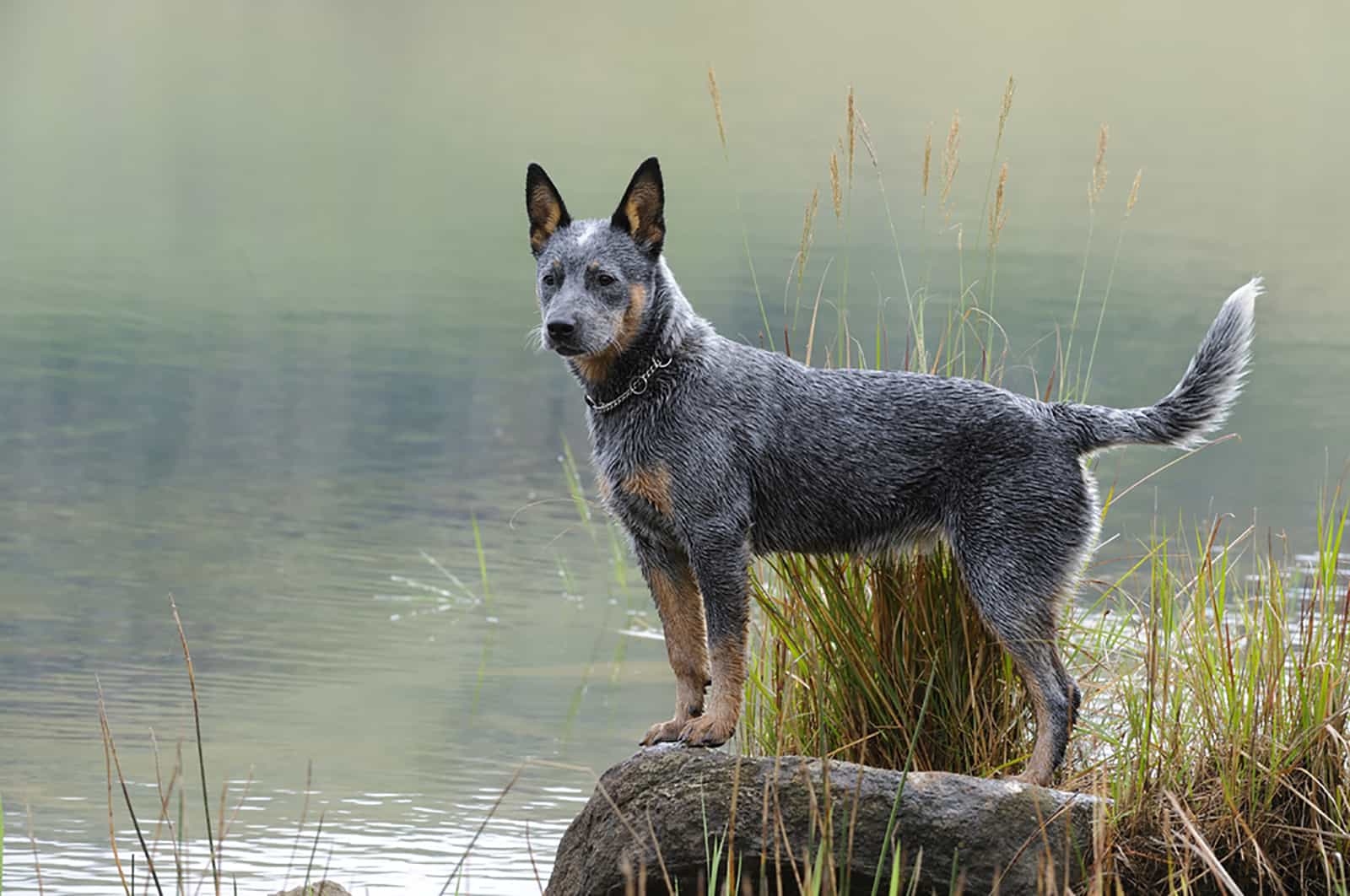
If you are looking for a big guard dog breed, then the Red And Blue Heelers may be a bit small for your liking!
Both Red and Blue Heelers are medium-sized dogs that are popular for their intelligence, performance, livestock nibbling behavior, and obedience.
They are great working dogs and their size helps them move swiftly between livestock.
Let’s get one thing clear — these dogs are of the same size but there can be a few differences in terms of weight, depending on what each dog is fed with and how much physical activity it has.
Red Heeler Size
As medium dogs, Red Heelers grow between 17 and 20 inches tall and they weigh between 35 to 50 pounds on average. So, the Red Heeler is neither a big nor a small guard dog — it falls right in the middle!
The Red Heeler becomes heavier and larger than its blue counterpart if it is overweight or if it suffers from metabolic disease.
Blue Heeler Size
According to the Blue Heeler growth chart, when this herding dog reaches 24 months of age (adult size), it weighs between 45 and 50 pounds.
An adult purebred Blue Heeler can reach anywhere from 17 to 20 inches in height, while its miniature counterpart — the mini Blue Heeler only grows up to 15 inches tall.
Red and Blue Heeler males are larger than females, which is normal for all dog breeds.
Appearance
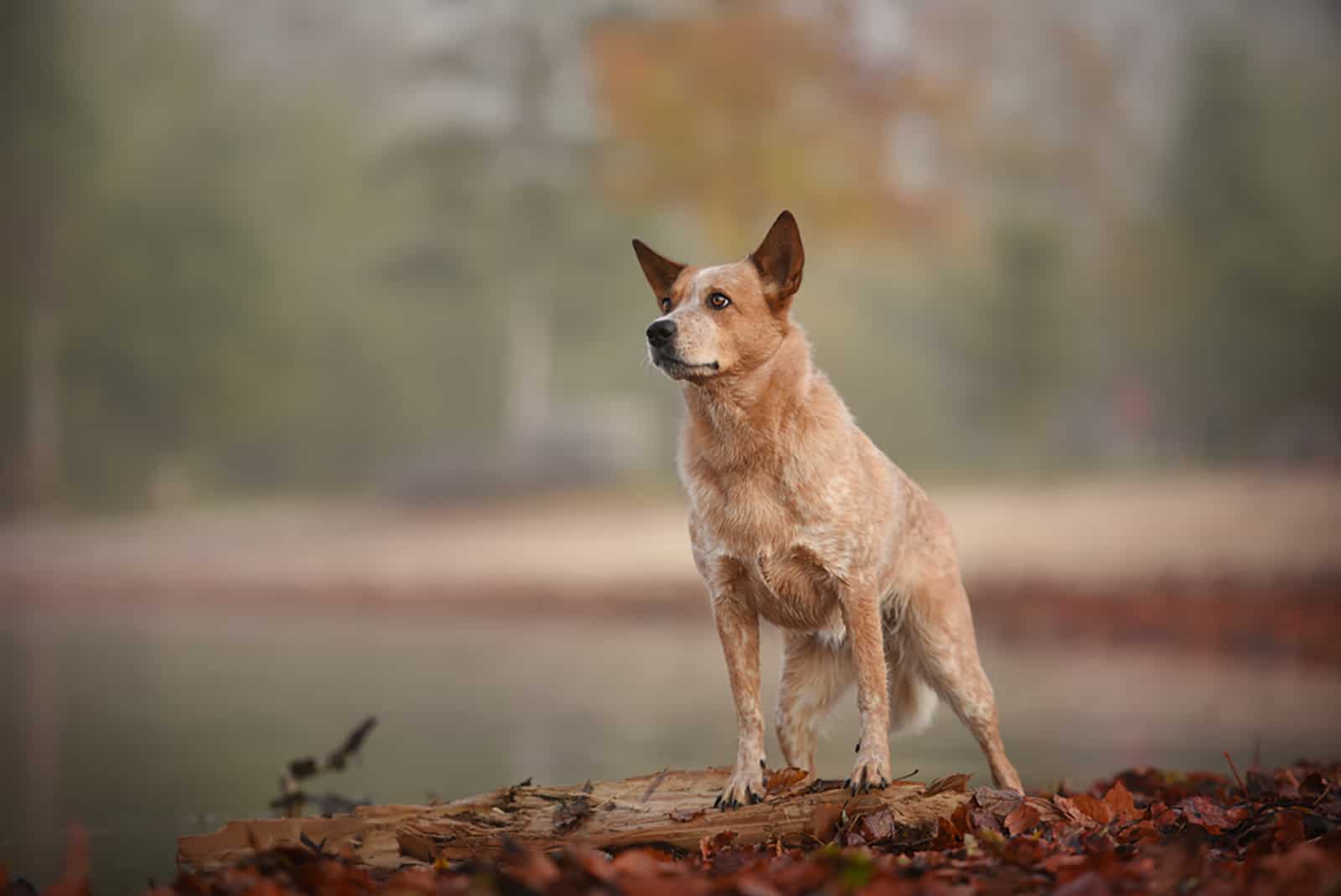
The Red and Blue Heeler Dogs are a popular breed of Australian Cattle Dogs which got their name for nibbling on the heels of livestock in order to round them up and herd. They did not get the name because their heels are red or blue in color.
Many dog lovers are not aware, but both Red and Blue Heelers are blue-eyed dogs that often inherit canine heterochromia — a condition that colors each eye in a different color.
Red Heeler
The Red heeler is a sturdy, medium-sized dog with a square head, naturally erect ears, and a deep chest. The Red Heeler’s back is long, and its legs are short, but not as short as the Dachshund’s.
Comparison wise, the Red Heeler is a rare breed with a distinctively short tail. However, both the Red and the Blue Heeler are born with normal tails but owners or breeders have them docked.
When you look at its compact body, the Red Heeler is one of the coolest dog breeds around!
Blue Heeler
The Blue Heeler may appear as a smaller, more athletic dog than the Red Heeler, but that is probably due to its darker coat color which visually makes the dog smaller.
Similar to its red counterpart, the Blue Heeler has a longer back with a slope and shorter legs than most medium-sized dogs.
Blue Heeler mixes such as the Blue Heeler Corgi mix inherit even shorter legs which make them look adorable! If the purebred Blue Heeler dog mixes with a Jack Russel Terrier, then its looks will include the physical traits of both parent breeds.
Coat Type
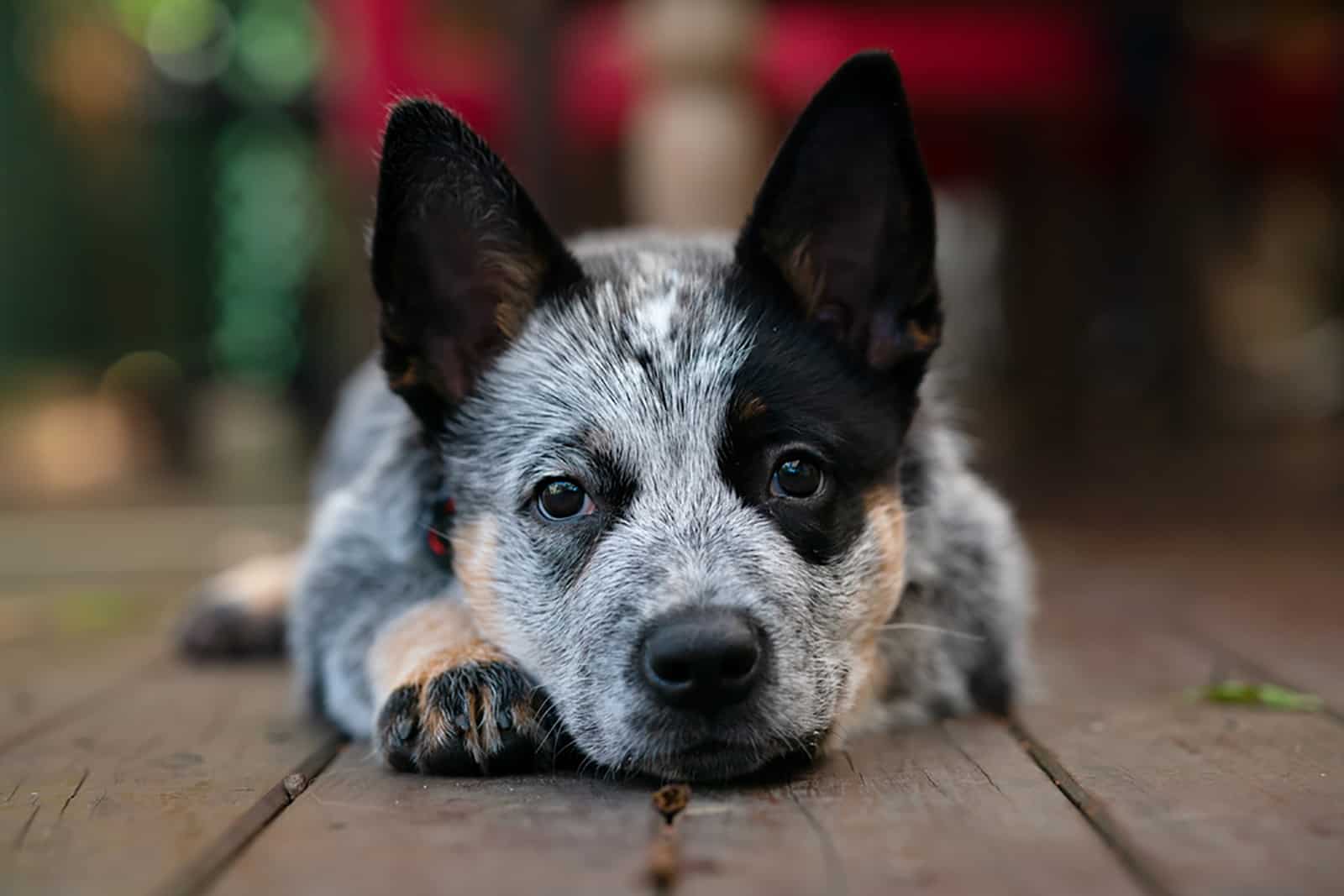
Both Red and Blue Heeler dogs are not your everyday big fluffy dogs which is favorable to dog owners that do not want to deal with too much dog hair.
To put it simply, both Red and Blue Heelers inherit a thick, but short double-coat that consists of a coarse outer coat and a soft undercoat.
The double coat gives both dogs proper thermoregulation — it keeps them cool during summer and warm during winter.
Red Vs Blue Heeler: Coat Colors
Red and Blue Heelers inherit different coat colors with different patterns:
• Speckled coat type
• Mottled coat type
Here is a fun fact: both Red and Blue Heelers newborn puppies are pure white! Just like Dalmatians, these dogs don’t have any spots on their bodies when they are born.
At around three weeks of age, Red Heelers start to appear more reddish, whereas Blue Heelers develop a bluish-gray coat color.
Red Heeler
When we are talking about red-colored dogs, such as red Dobermans, we are mostly referring to the brown coat color that appears reddish when exposed to the sunlight.
The white coat of a Red Heeler dog is full of red or sable patches and speckles, which makes its appearance truly remarkable.
Similar to the red merle Australian Shepherd dog, the Red Heeler can inherit a merle coat pattern with various speckles located all over its body.
Due to the fact that the Australian Cattle dog has been mixed with Kelpies, Dalmatians, and Collies, the Red Heeler inherited a mixture of their coat colors.
Blue Heeler
As its name implies, the Blue Heeler appears blue or may even appear as a black dog.
The Blue Heeler is a spotted dog breed that seems to have inherited spots from the Dalmatian dog that it was once bred with.
Blue Heelers have specific blue color coats that are often full of speckles and dots. Some people even mistake them for Dalmatian dogs!
But, in addition to the blue merle pattern, Blue Heelers have different shades of gray and black hairs across the body.
Its coat color and pattern resemble the black, and white spotted coats of Bluetick Coonhounds.
Red Vs Blue Heeler Shedding Amount
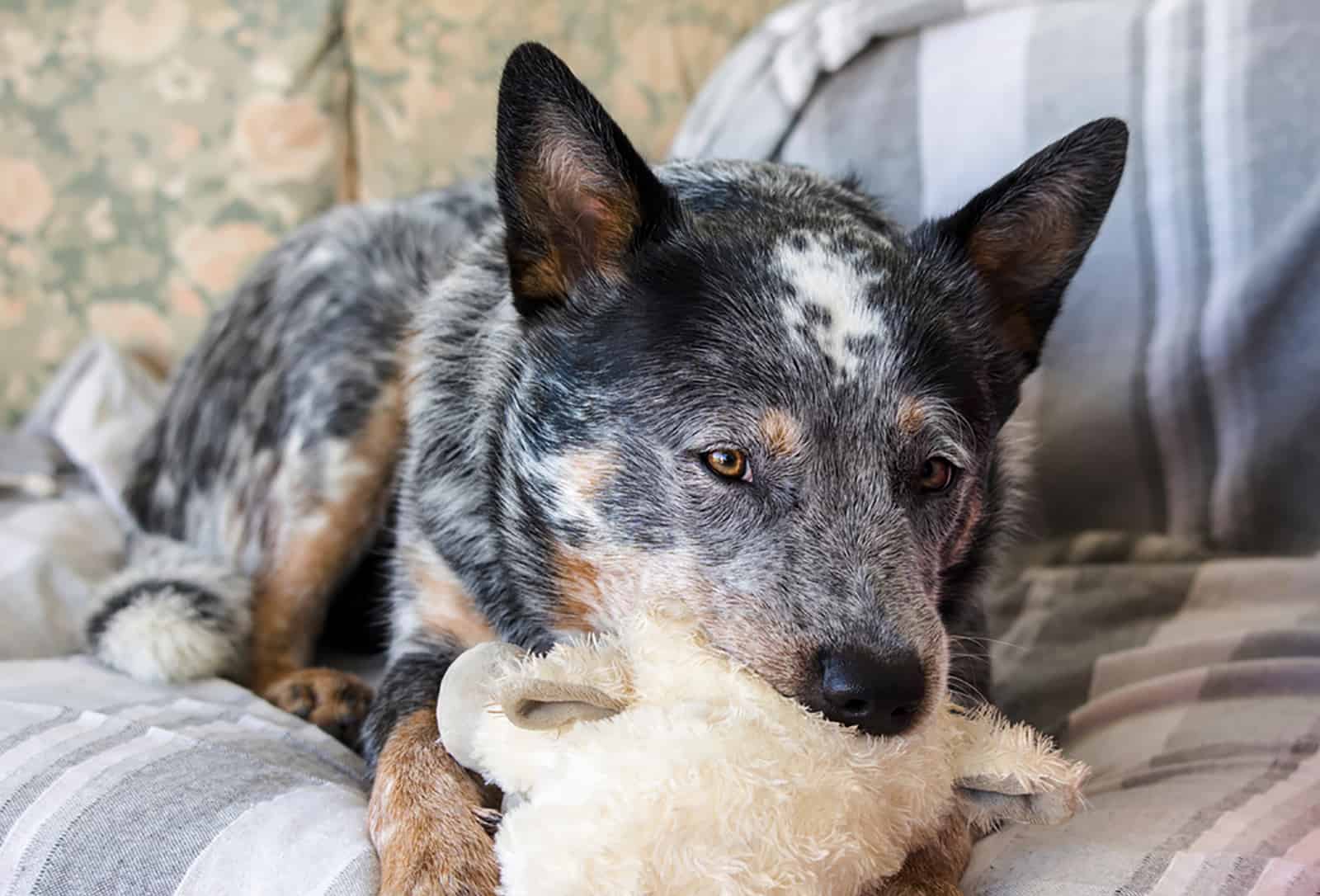
The Red Heeler and the Blue Heeler are both moderate shedders, which means that you are going to see some short hairs around the house.
Additionally, Red and Blue Heelers become heavy shedders during seasonal changes. We like to call them seasonal shedders.
Both of them have double coats with thick undercoats, so it is normal for such a coat to shed moderately.
But, if you have a Blue Heeler crossbreed, such as the Blue Heeler GSD mix, then you can expect this dog to shed almost as much as the purebred German Shepherd.
Another crossbreed that may even blow its coat seasonally is the Blue Heeler Husky mix. Although it is cute, this Blue Heeler crossbreed is going to be one helluva shedder!
Personality
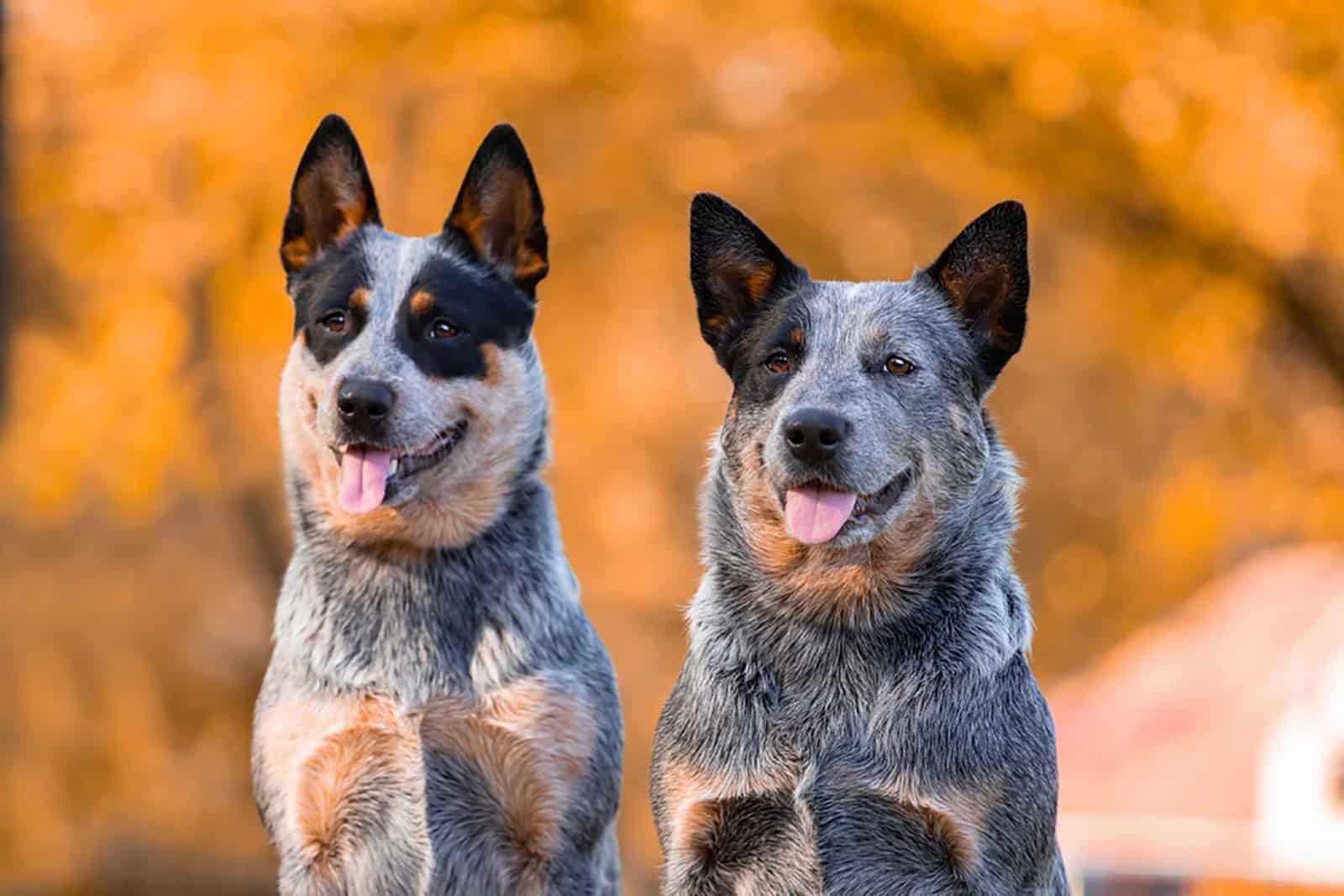
When someone says that the Red and Blue Heelers are good guard dogs, people automatically think that they are dangerous dogs. Well, part of it is true — Red and Blue Heelers can be dangerous to strangers and intruders.
So, is a Red Heeler a good family dog?
Yes! Both Red and Blue Heelers show their affectionate side toward family members and livestock.
As we previously mentioned, Red and Blue Heeler dogs are the same breeds and their personalities can differ depending on how they are trained and socialized.
In general, both make wonderful dogs for hunting, working, and herding. They are also great at being family companions with whom you will never be bored.
Although Red and Blue Heelers get along well with children, they need to be kept under close eye because they can knock over a small child when the zoomies hit!
Even crossbreeds like the Blue Heeler Pitbull mix inherit part of the unique Blue Heeler personality and energy levels.
Energy Levels
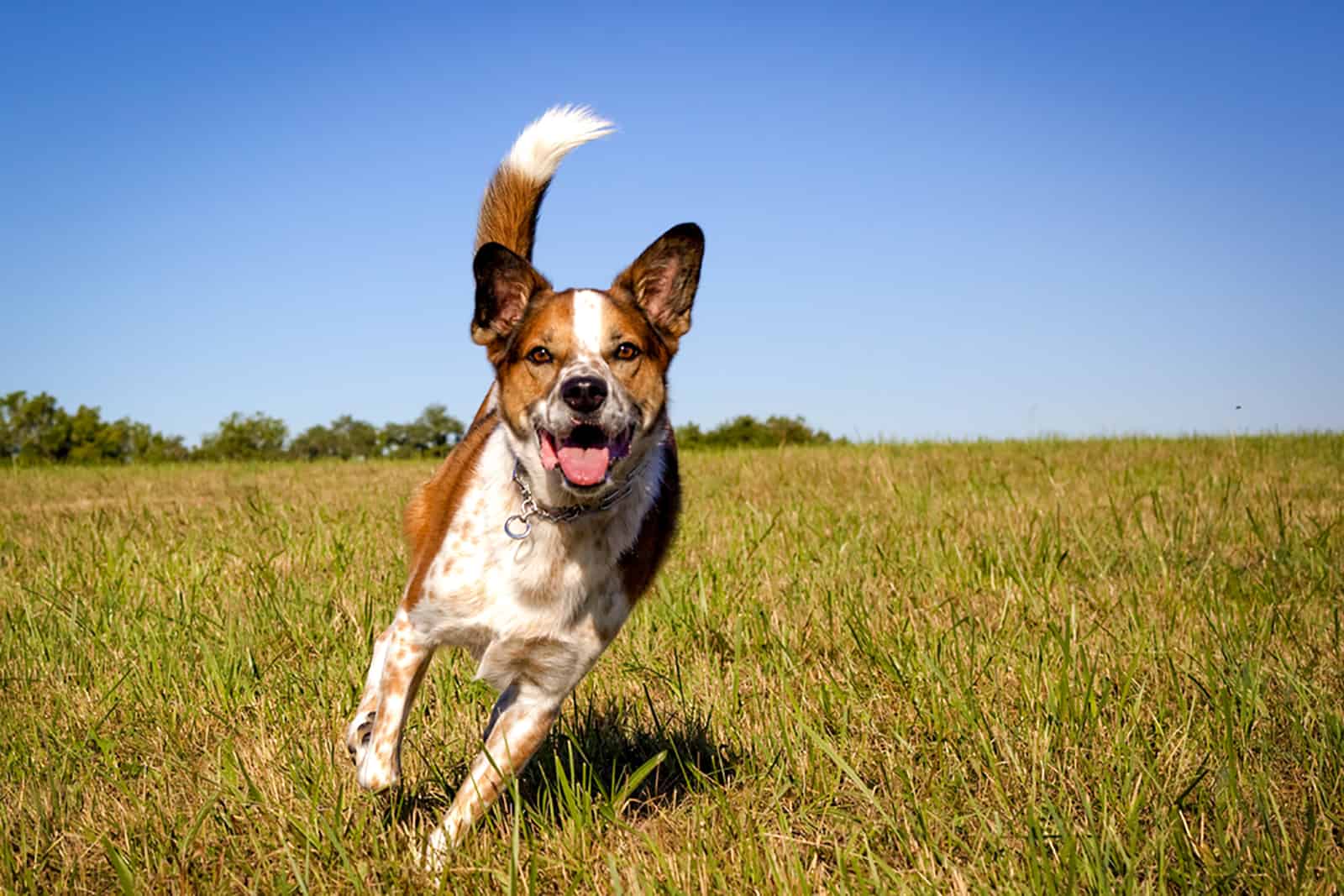
Let me just start by saying that both dogs have enormous energy levels and need a lot of exercises. Both Red and Blue Heelers are very energetic dogs that are not for lazy dog owners!
They were bred to herd livestock and to help out farmers and ranchers with whatever task they had going on. Both are livestock drovers — they have it in their genes. This means that these herders are doggos packed with energy!
But is one more energetic than the other? Time to find out!
Red Heeler
In addition to being intelligent and assertive, Red Heelers are hyper! If you think that Australian Shepherds are active dogs, then take a look at the Red Heelers. These herding dogs are all over the place and they get the job done very well.
Ranchers that own Red Heelers often praise them for doing an excellent job in droving and herding livestock, as well as chasing away intruders!
With so much cognitive and physical potential, the Red Heeler requires constant mental stimulation and physical activity. If left alone for too long, the Red Heeler will become bored and may turn to destructive behavior.
Blue Heeler
The Blue Heeler is a truly active herding breed that seems to have inherited the energy levels from its cousins — the dingos (wild dogs).
Even though it is not wild, the Blue Heeler dog loves to spend its time outdoors, guarding the ranch and chasing other animals.
Smart brains and fast legs are what make the Blue Heeler so lively — sometimes it feels that this dog is about to fly! High energy levels in Blue Heelers are a good thing because they can be directed towards efficient training and socialization.
On the other hand, if the Blue Heeler Is left alone and becomes bored, it may attempt to jump fences and cause havoc in your backyard!
If you think that Aussies have the reputation of being energetic dogs, wait until you see Blue Heelers! The Blue Heeler is a definition of high energy dog.
Can you imagine how energetic the Blue Heeler Australian Shepherd mix is going to be?
Trainability
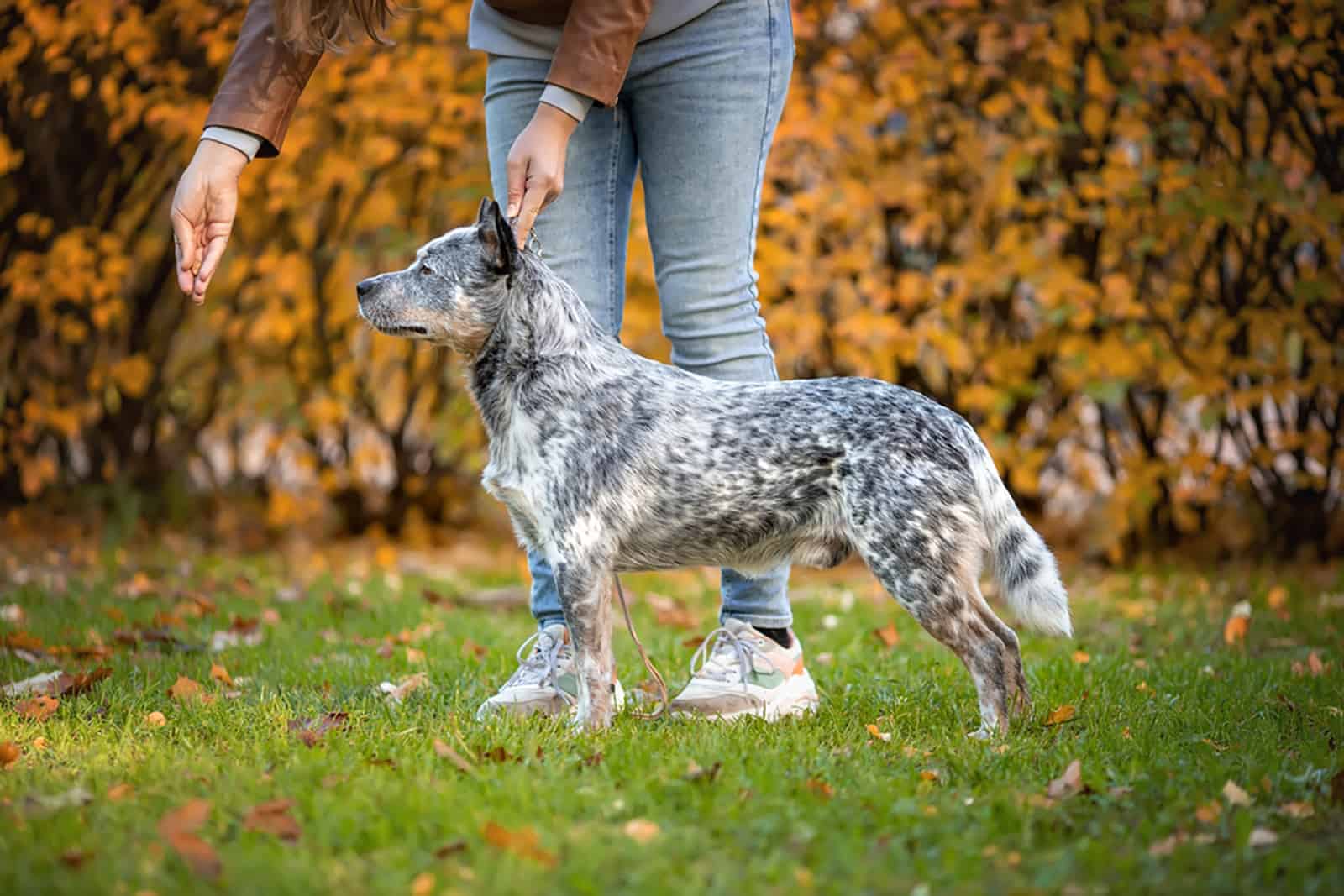
Difficult dog training is a thing of the past when it comes to Red and Blue Heelers. Although they are not as easy to train as the Belgian Malinois, both Red and Blue Heelers show willingness to play and please their owner.
Moreover, these Australian Cattle dog puppies are so clever that they never cease to amaze with their learning skills.
Do you think that their trainability levels are different? Let’s find out!
Red Heeler
Turns out that Red Heelers are more attentive and focused on different tasks that they are given. However, they show a more difficult and stubborn side which can make the training process a bit messy.
The majority of dog lovers and Red Heeler owners believe that these dogs are more intelligent than their blue counterparts.
Moreover, the Red Heeler is considered a choice for guarding. Truth be told, both Red and Blue Heelers are considered to be one of the top smartest dogs!
That said, I believe that both dogs are intelligent enough to be trained to serve as immaculate working dogs, attentive guard dogs, and affectionate family pets.
Blue Heeler
In contrast to Red Heelers, Blue Heelers seem to be more chill — at least from the dog owner’s perspective. Again, this does not have to mean that all Blue Heelers are more laid-back than their red counterparts.
Blue Heelers are a breeze to train — they learn quickly and they want to impress their owner. Both Heelers have guarding instincts that require frequent training and early socialization.
To avoid boredom, the Blue Heeler dog needs everyday exercise and mental stimulation.
In addition to being great guard dogs, Blue and Red Heelers are amazing herding dogs and their nibbling behavior proves it!
Grooming
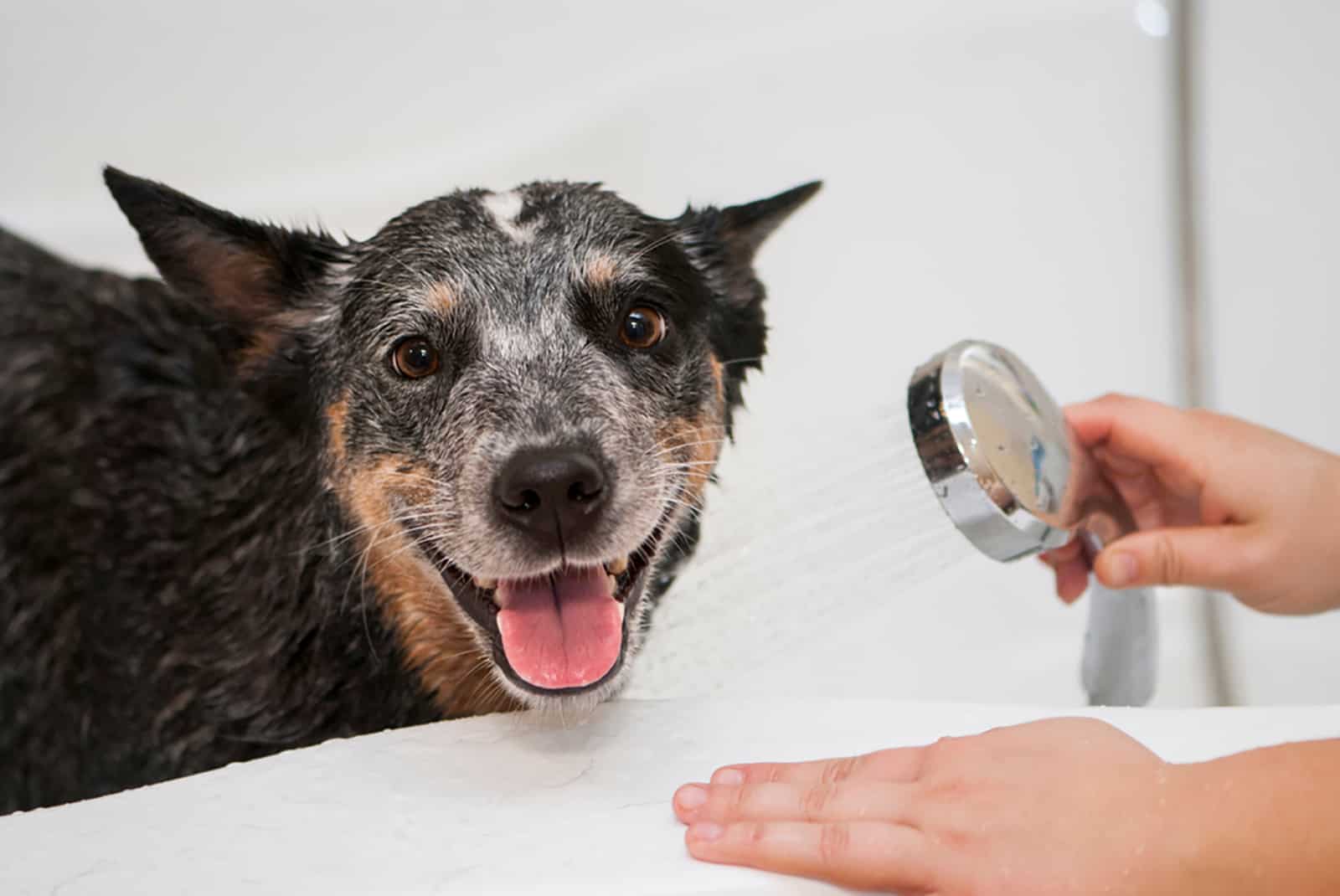
Grooming is part of every dog owner’s life and the Australian Shepherd dog has made this chore easy. The coat type of both the Red and the Blue Heeler is favorable because it does not require a lot of work to be done around it.
Both dogs have the same coat type so they require the same grooming and pampering sessions, or do they?
Red Heeler
The moderately-shedding coat of a Red Heeler should be brushed daily. However, most Red Heeler owners have experienced brushing their dog two to three times per week which proved to be totally okay.
Keep in mind that during the shedding season (fall and spring), the Red Heeler will require daily brushing.
The Red Heeler’s coat is more vivid and it has more white hairs than the Blue Heeler’s coat. Visually, the Red Heeler’s coat may appear dirtier if it gets wet from mud or rain or if it rolls on some dead animals.
When compared to the Blue Heeler, owners are going to have to bathe the Red Heeler more frequently. However, the dog should not be bathed often because its coat will become dry and brittle.
If you need to, bathe your Red Heeler every month or two.
Blue Heeler
The shedding amount of Blue Heeler puppies is the same as the shedding amount in Red Heelers. That said, the Blue Heeler dog has to be regularly brushed — especially during the shedding season.
When it comes to getting their coat mucky, Blue Heelers seem to camouflage all the dirt and appear clean. Similar to the Red Heeler, you will want to bathe your Blue Heeler only when necessary.
If you are not sure how to groom your Blue Heeler, professional groomers are there to help you!
Red Heeler Vs Blue Heeler: Health Problems
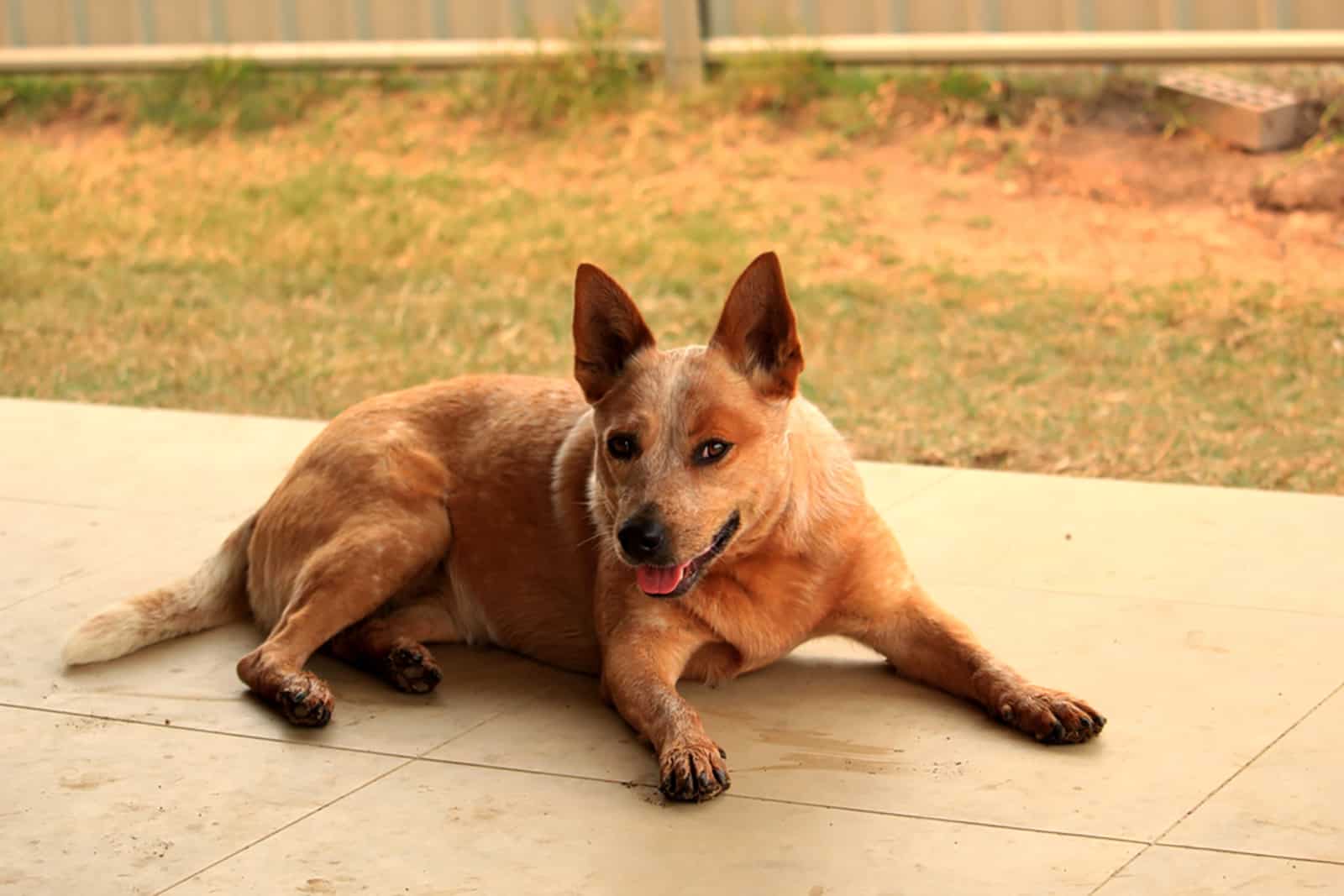
Hey, I’ve got some good news for you! Even though the Australian Cattle dog is a pure breed — both Red and Blue Heelers do not inherit many health problems.
I mean, they are as healthy as they can be! In fact, Red and Blue Heelers are among the healthiest dogs out there.
However, years of selective breeding had to bring some genetic illnesses along.
That said, Red and Blue Heelers can suffer from Progressive retinal atrophy (PRA), which is an eye condition. Other than that, elbow and hip dysplasia are common developmental issues that can affect these wonderful dogs.
In addition to these health problems, research shows that Australian Cattle dogs are prone to deafness as a hereditary condition.
Red and Blue Heeler mixes, as well as other mixed dog breeds are generally healthier than purebred dogs.
Lifespan
Depending on the quality of the breeding program, the quality of dog food, and the overall quality of everyday life, both Red and Blue Heelers can live between 13 and 15 years of age.
When we convert dog years to human years, the Red and the Blue Heeler can live between 74 and 83 human years!
Choosing reputable Red or Blue Heeler breeders is a way to ensure that your ACD puppy is going to have the best start in life and that it will grow into a healthy puppy without genetic diseases.
Red Heeler Vs Blue Heeler: AKC Recognition
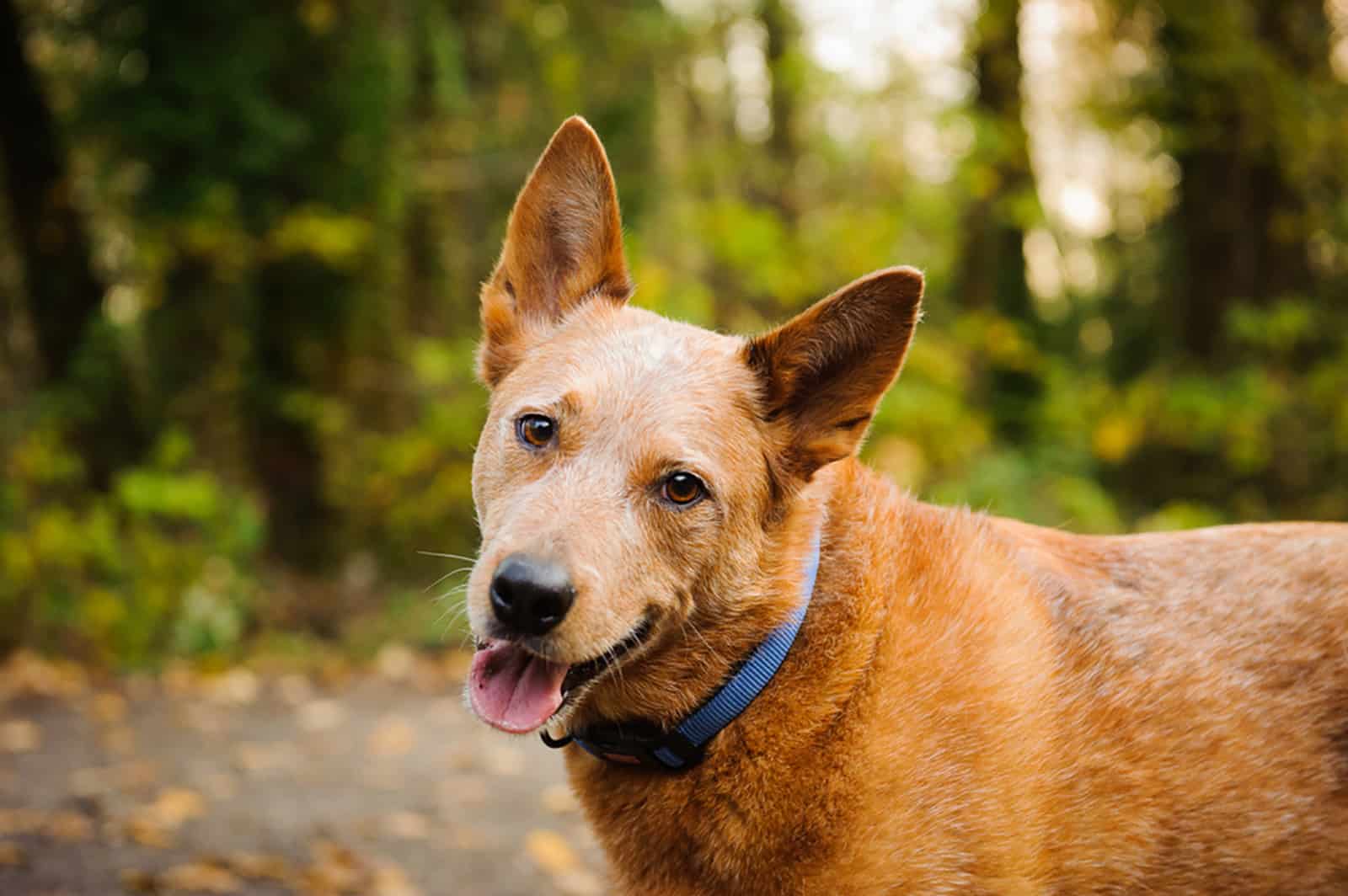
The Australian Cattle dog (ACD) is recognized as an official dog breed by the American Kennel Club. Many paw lovers are surprised when they realized that the ACD was accepted for registration back in the year 1980.
The American Kennel Club (AKC) issued the Australian Cattle dog breed standard which describes the standard coat colors of this majestic dog.
That said, there are two distinct standard coat colors of each Australian Cattle dog: red or blue speckled and mottled
Conclusion
Although the Red Heeler vs Blue Heeler comparison mentions a few differences between these two herding dogs, they share many more similarities.
In the end, it all comes down to the coat color — most aspiring dog owners find it difficult to choose between a vivid Red Heeler and an enchanting Blue Heeler.
But, dog coat color does not have anything to do with its personality and overall temperament. Aspiring dog owners should put all the Red Heeler vs Blue Heeler similarities and differences on the table and choose their favorable pup.
I can assure you that both of these incredible working dogs make amazing family pets and even better cuddle buddies! Which one do you prefer?
Related Content
Japanese Spitz Vs. Samoyed – Which Is The Best Dog For You?
European Vs. American Basset Hound: Are These Dogs The Same?
